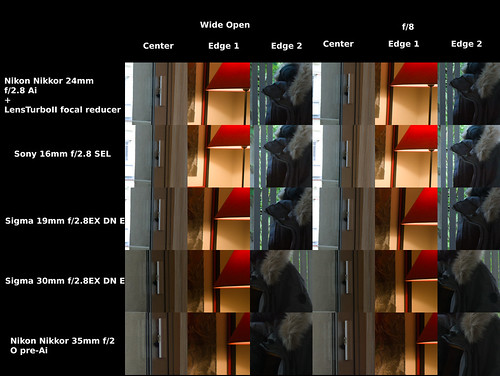We were in in southern France this winter and taken the TGV. This allowed me to pack a rather heavy suitcase. But coming back north meant flying. Suddenly the suitcase was a bit heavy. My wife tried to pick up my carry-on and immediately asked what the h*ll I had in there. It contained two computers and three cameras with Nikon Nikkor manual focus lenses.
My wife's question was a good one and I've now come to question that I should carry all my fun, preferred "stuff" when we're away from Paris. Instead I might want to carry something light.
Recently RawTherapee has come bundled with something called "Capture Sharpen". It is an image pre-sharpen module that works to reverse image softness that comes from imaging sensors that use anti-aliasing (AA) filters.
This function is automatically applied, I understand, in popular
non-open source software image processing applications such as
Lightroom and Capture One.
This makes sense as, for instance, Canon uses strong AA filters with their cameras to combat moire patterns. This tends to hide optical resolution. Canon digital images often appear softer before the "capture sharpen" image processing step than competitors imaging systems.
Sony is one of those competitors and based on personal experience they use weaker AA filters, and in some cases uses no AA filtration at all. So it's easy to see lenses of varying degrees of "sharpness", particularly when shot wide open.
So I wondered if "capture sharpen" might clean up optical effects similarly to the way this function tries to reverse the effects of AA filters.
In this comparison I grabbed some of my beloved Nikon Nikkor glass (which tend to be soft wide open) and compared their images against a few small, sharp, auto-focus Sigma and Sony SEL lenses.
Setup -
- Big Beefy Manfrotto tripod (so big that it is suitable for stabilizing an old 8x10inch view camera)
- Sony NEX-7 - 2 second delay, ISO 100
- Lenses - shot wide open and at f/8 only
- Nikon Nikkor 24mm f/2.8 Ai + Lens Turbo II - effective APS-C focal length of 16mm
- Sony 16mm f/2.8 SEL
- Sigma 19mm f/2.8 EX DN E
- Sigma 30mm f/2.8 EX DN E
- Nikon Nikkor 35mm f/2 + Lens Turbo II - effective APS-C focale length of 35mm
Scene -
What I setup was a high contrast situation with strong highlights and deep shadows.
Click on the following image and find the full resolution image to inspect the image at 100percent.

Comments -
In general, "soft" or out of focus image areas will remain so after passing the "capture sharpen" step.
Comparing my Nikon Nikkor 24mm + LensTurboII setup against a Sony 16mm after the "capture sharpening" step I see that the centers are pretty much equal in terms of apparent sharpness. The edges, however, of the 24mm + LensTurboII remain softer than the 16mm Sony. In fact, at f/8 the 16mm Sony is really quite good, where it matches the performance of the brilliant 19mm Sigma EX DN E.
The Sigma 19mm and 30mm lenses are brilliant across the field at both wide open and f/8 after the "capture sharpen" step. Not much more to say than this.
Which leaves us with looking at one last Nikkor, the 35mm f/2 pre-Ai. I really like this lens. When coupled with the LensTurboII focal reducer I find this focal length is nearly a perfect match for how I "see." Wide open it tends to be just slightly "soft" compared to the Sigma 30mm. However, after the "capture sharpen" step apparent "sharpness" the Nikkor cleans up beautifully.
Old, many times softer lenses can be made to look like their modern counterparts. It's pretty easy to see that "capture sharpen" levels the playing field, as it were.
Returning to the question of camera system weight and portability, I'm now re(?)-convinced that I don't have to carry the Nikon Nikkors if I don't want to or if I find myself in a situation where less weight becomes important.

No comments:
Post a Comment